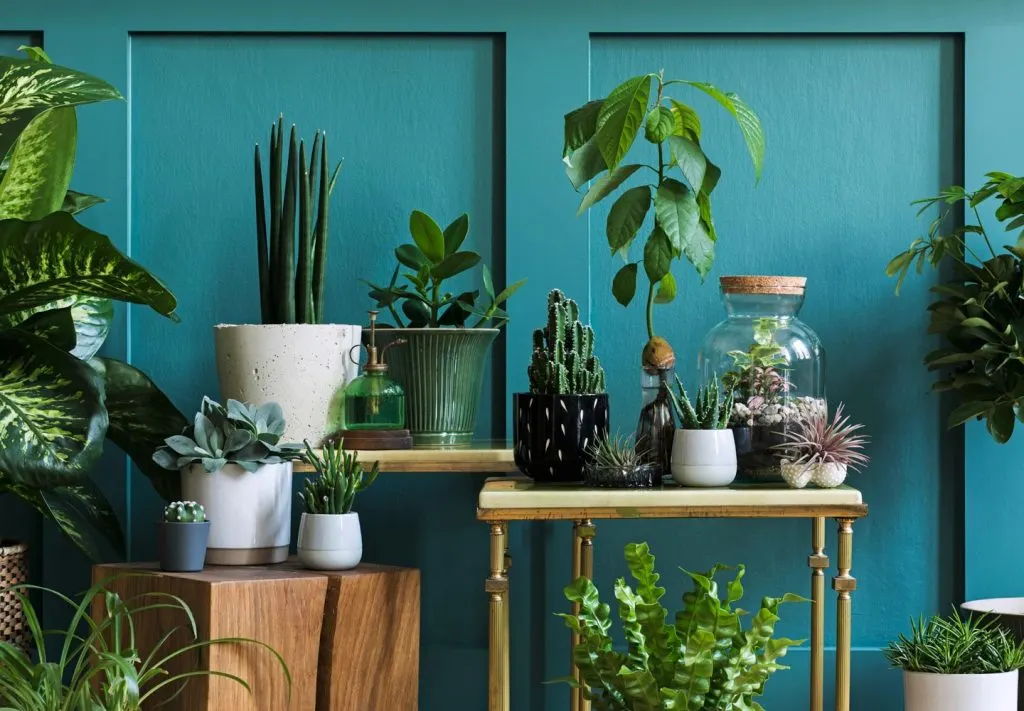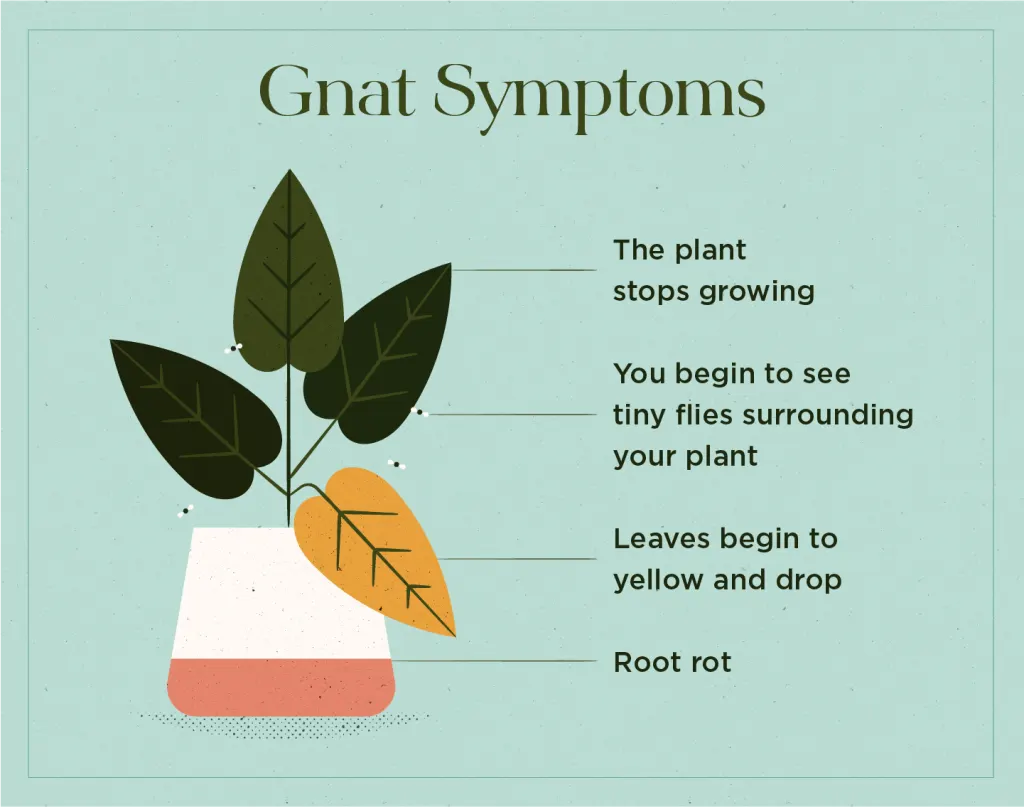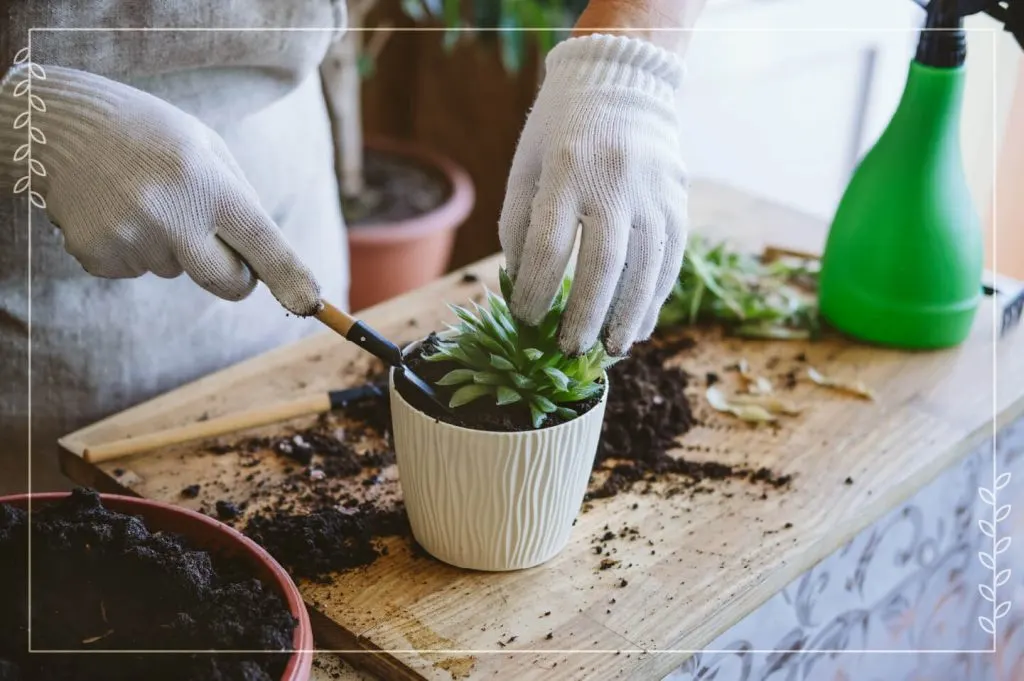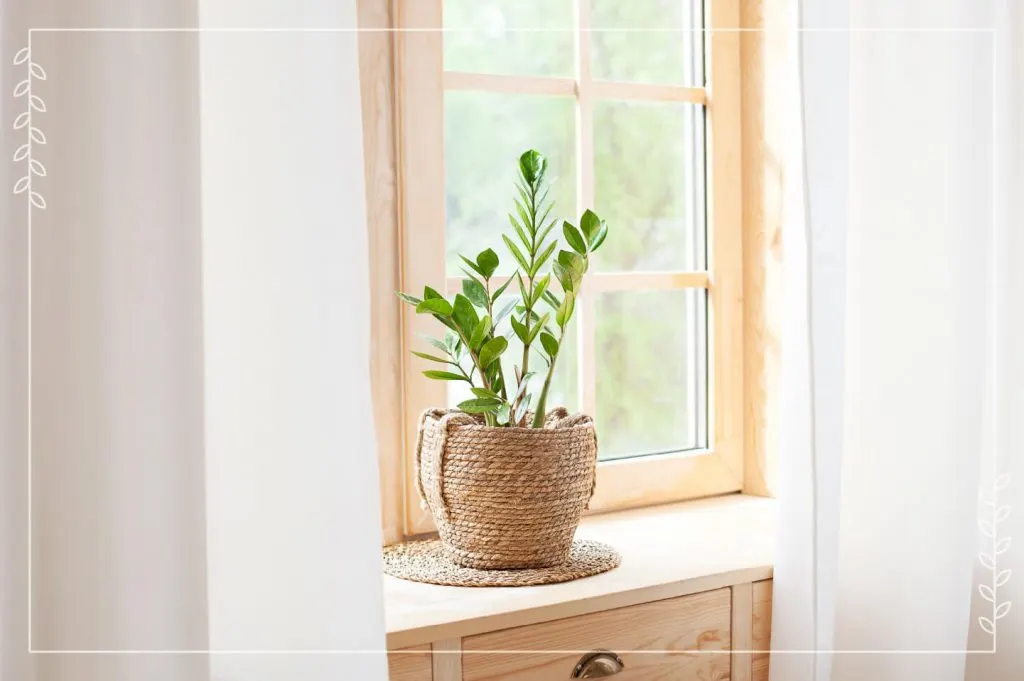June 02, 2021
How To Get Rid Of Gnats in Plants: Causes, Treatment and Prevention
If you’ve noticed tiny flying bugs perched on your houseplant lately, you may have a fungus gnat infestation. Though easy to treat, these little pests can still be a pain to deal with and a hindrance to proper plant care, especially if they’ve already laid eggs.
Fungus gnats are commonly mistaken for fruit flies, but the two pests have several distinguishing characteristics that will help you tell them apart. Fungus gnats are slender and have long legs — they usually have a black head and clear wings that are used for minimal flying. Fruit flies, on the other hand, are slightly more orange and have stubbier legs.
Not sure where to begin with gnat removal? We’ve put together this helpful guide on how to get rid of gnats in plants — it covers various symptoms, treatments and prevention tips so you can ensure your plants are pest-free.
Does My Plant Have a Gnat Problem?
Before you diagnose your plant with a gnat problem, there are a few signs to keep your eye out for. Knowing if your plant has gnats can sometimes be hard to tell since the bugs are so tiny. Though these little guys don’t necessarily harm the plant itself (unless it’s a severe case), they still can be a hassle to deal with.
Below we’ve compiled a list of sure symptoms so you can be prepared to treat your plant when the time comes.
The plant stops growing. It may not be the adult gnats you need to look out for! The larvae actually like to eat your plant’s feeder roots, which ultimately affects the plant’s ability to absorb nutrients.
Leaves begin to yellow and drop. If the damage is especially bad, the plant may begin to wilt and the leaves will yellow. If the roots are extremely damaged, the plant may not be able to survive.
You begin to see tiny flies surrounding your plant. If you’re near your plant and see little flies circling around, that’s almost always a sign that you have fungus gnats.
Root rot. In many cases of overwatering a plant, the roots will begin to rot and spread through the soil. Gnats come into play here because they love moist environments, so if you notice your plant has symptoms of root rot there is a good chance you may have fungus gnats.
What Causes Gnats in Houseplants?
There could be a wide range of causes to your gnat infestation, but the most common ones are organic debris, wet soil and light sources. Keep reading below to find out what may have caused your plant to attract gnats.
Organic Debris
Fungus gnat larvae love nothing more than feeding on organic debris in potting soil. These bugs reproduce by laying eggs on the first couple inches of soil, and when they hatch they feed on the organic matter around them. After about two weeks, they begin to pupate.
Wet Soil
If you find yourself watering your potted plant frequently and the soil is always wet, that might be the reason you now have fungus gnats flying around. Keeping the soil moist at all times creates the perfect environment for these bugs to survive and reproduce — something we definitely don’t want to happen!
Light Source
Not only do fungus gnats get drawn toward organic debris and moisture, they also like to swarm around light fixtures. This makes your home the perfect place for them to gather! If you do notice fungus gnats flying around your lamp or window, you can use one of the following ways below to get rid of them.
How To Get Rid Of Gnats in Plants Naturally: 4 Ways
Thankfully, there are many natural and chemical-free solutions to eliminate fungus gnats from your beloved plants. You can opt for a classic trap, or turn to household items like dish soap and potatoes!
Let the Soil Dry
Since fungus gnats and their larvae like to nest in moist soil, be sure to let the soil dry out for a couple of days and avoid watering your plant. This will create an inhabitable environment for the gnats and they will die off in dry soil. Your houseplant will be able to handle the dryness longer than you might think, so don’t be afraid to skip out on your next watering to remove the gnats.
Pro tip: Take your plant out of its planter and remove any excess water at the bottom. This will ensure that there isn’t any moisture for gnats to lay their eggs.
Use Traps
If you’re looking for a quicker solution, there are several traps you can use to eliminate these pesky bugs. Depending on what best suits your needs, you can opt to DIY these with a few household items or run to the store and buy specialized traps.
1. Vinegar mixture: Fill a shallow saucer with 2-3 drops of liquid dish soap and a cup of white vinegar. Place the bowl near your plant — the gnats will be attracted to the solution and fall into the trap. Keep repeating the process until all the gnats are gone.
2. Sticky fly traps: If the smell of vinegar puts you off creating your own DIY gnat trap, another option is to buy sticky gnat traps. These small sheets of paper are a bright yellow color, attracting the gnats and catching them with adhesive. This method is easy and nontoxic, though it may not be a pretty sight.
3. Flycatcher: If you’re sick and tired of gnats in your plants and need an immediate solution, consider investing in an indoor fly-catching device. These can be found online or in your local store and are usually USB-powered. The gnats become attracted to the LED lights and fans, which will ultimately suck them into the trap.
4. Potatoes: Have some spare potatoes in the kitchen? Use them as a trap! Cut the potatoes up into small pieces and place them flesh down on the soil. The moisture from the potatoes will attract the fungus gnats — just make sure the pieces don’t dry out, otherwise it won’t work.
Sanitize and Repot
If you’re looking to take matters into your own hands, consider removing the plant from its planter and scooping out the soil. When you do this, be careful not to disturb the roots and only remove what you can. Seal up the infected soil in a plastic bag and sanitize the planter with warm water and soap. Once this is done, repot your plant into fresh soil and place it back into its planter.
Use a Spray Bottle
Grab a spray bottle and fill it with water and dish soap. Spray the solution on the top layer of soil and keep repeating the process until the gnats are gone. This is a simple and natural way to remove fungus gnats if you’re looking for something effective.
How To Prevent Gnats in Houseplants
So, how do you prevent fungus gnats from infesting your houseplants? You can take several precautions to ensure your plants don’t get overrun by these little bugs. With a few simple steps, your fast-growing plant will be healthy and thriving without any unwanted visitors!
Avoid Overwatering
The most common cause of fungus gnats in plants is overwatering, so be sure to let your soil dry out in between waterings as often as possible. Check the soil with your finger every few days, and once you feel it starting to get dry, leave it like that for about a week to keep gnats away. . These guys thrive in moist conditions, so be aware of how often you’re watering your plants!
Use a Pot with Good Drainage
Make sure the pot your plant is in has good drainage, otherwise the gnats will lay eggs and begin to spread. Having good drainage will also prevent root rot, a nasty disease that develops in plants that are overwatered.
Check Plants Before Bringing Inside
Many people assume that plants are bug-free when first bringing them into their home. Though that’s not always the case, it’s still important to check your plants before bringing them inside to ensure that they are free of gnats or any other pesky little bugs.
Frequently Asked Questions
Still have some lingering questions about removing fungus gnats? We’ve compiled some FAQs below to help you become the best gardening and houseplant expert you can be!
Will fungus gnats go away on their own?
Fungus gnats will not go away on their own. In order to ensure these bugs don’t hang around for a long period of time, you’ll need to take matters into your own hands and try several different methods to remove them. Something as simple as draining the excess water may solve the problem, or if there are too many, you might have to resort to traps.
Can I spray fungus gnats?
Yes, if you want to ensure the gnats are removed from the plant, spraying them is a viable option. You can go the natural route and simply use water and soap, or you can opt for a harsher solution with store-bought insecticide sprays. Keep in mind that these sprays can harm beneficial insects, so use them carefully!
Do gnats fly around the house?
Fungus gnats do have wings, however, they only fly around the soil or nearby the plant. They are also attracted to carbon dioxide, so you may notice some hovering near your nose or mouth.
Though fungus gnats are quite annoying to deal with, they are harmless to both your potted plant and yourself. However, it is still important to catch them early so you can avoid a potential infestation. With our advice, you’ll be ready to handle anything that comes your way!






